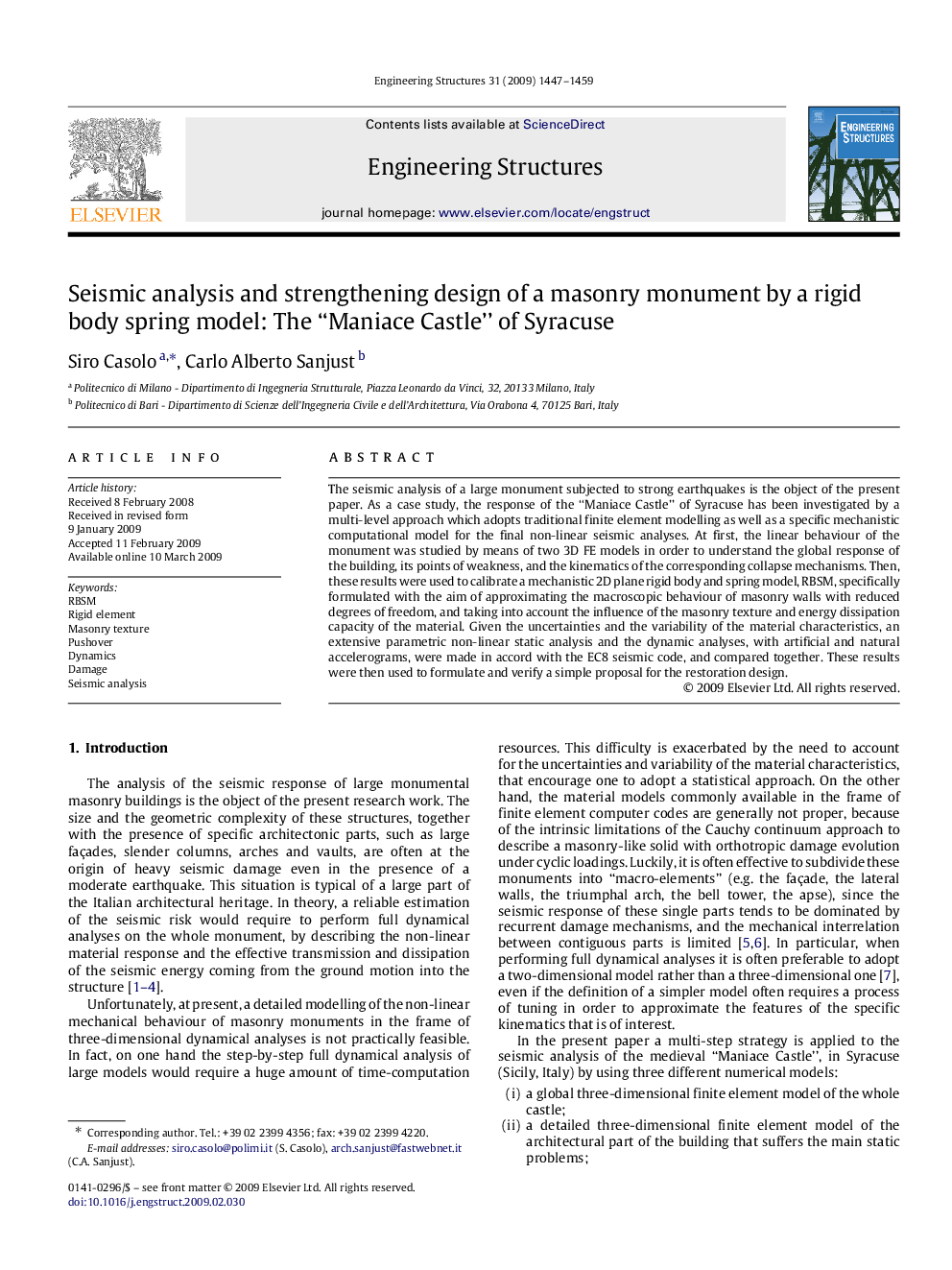| Article ID | Journal | Published Year | Pages | File Type |
|---|---|---|---|---|
| 268534 | Engineering Structures | 2009 | 13 Pages |
The seismic analysis of a large monument subjected to strong earthquakes is the object of the present paper. As a case study, the response of the “Maniace Castle” of Syracuse has been investigated by a multi-level approach which adopts traditional finite element modelling as well as a specific mechanistic computational model for the final non-linear seismic analyses. At first, the linear behaviour of the monument was studied by means of two 3D FE models in order to understand the global response of the building, its points of weakness, and the kinematics of the corresponding collapse mechanisms. Then, these results were used to calibrate a mechanistic 2D plane rigid body and spring model, RBSM, specifically formulated with the aim of approximating the macroscopic behaviour of masonry walls with reduced degrees of freedom, and taking into account the influence of the masonry texture and energy dissipation capacity of the material. Given the uncertainties and the variability of the material characteristics, an extensive parametric non-linear static analysis and the dynamic analyses, with artificial and natural accelerograms, were made in accord with the EC8 seismic code, and compared together. These results were then used to formulate and verify a simple proposal for the restoration design.
